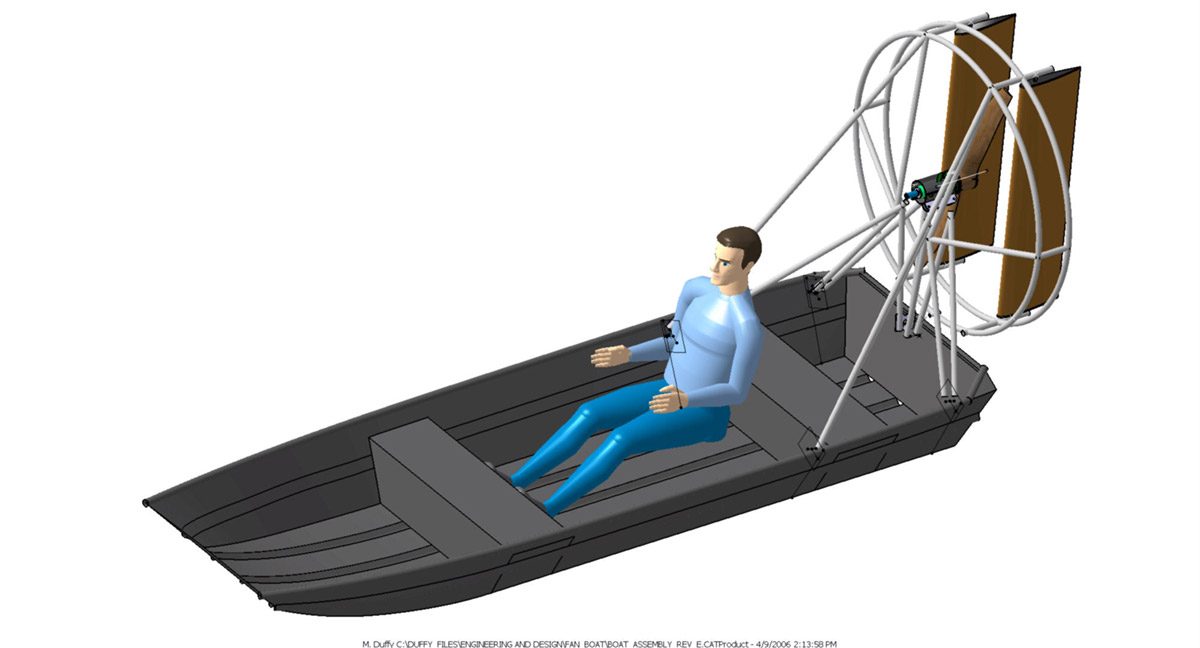
How it this possible? Even if the gif is fake, the Mythbusters did it and with a large sail it really moves forward. What is the explanation?

How it this possible? Even if the gif is fake, the Mythbusters did it and with a large sail it really moves forward. What is the explanation?
The concept of blowing your own sail really does have to do with conservation of momentum. In that very episode of Mythbusters you speak of, the sail was removed, the fan was spun around and the ship/boat was propelled forward much faster than with the fan facing into the sail (i.e. figure (1) is much faster than figure (2)).


The reason is really quite simple and can be explained with throwing a ball off a boat.
Suppose you are on a boat carrying a ball with total mass $m_{ball}+m_{boat}$ where $m_{boat}$ also takes into consideration your mass. Now if you throw the ball off the boat at velocity $v_{ball}$ then you and the boat will have momentum $m_{boat}v_{boat}=-m_{ball}v_{ball}$. This is analogous to the figure (1).
Now consider the case of figure (2). In this case, I throw the ball at the sail, it bounces off the sail and into the water behind me. Because the process is inelastic, the ball now leaves the boat with $v'_{ball} < v_{ball}$. Therefore my momentum is now $m_{boat}v_{boat} = -m_{ball}v'_{ball}$.
Now just replace the ball with air molecules and the analogy is complete. Therefore it will always be more efficient to spin the fan around and blow the fan in the opposite direction while forgetting the sail.
Hope this helps!
Of course it's possible. The air is blown forwards and bounces off the umbrella. The net flow is to the back. Then its a question of conservation of momentum...
As others have said, the skater would move faster if he simply pointed the leafblower behind him, rather than bouncing it off the umbrella.
However, there is a real use for this technique. Jet engines normally suck in air from all directions and blow it out of the back in order to move forward. However they are also capable of reverse thrust if fitted with a device to redirect the air towards the front. This is used for braking after landing.
http://en.wikipedia.org/wiki/Thrust_reversal
Of course this is much less efficient than normal forward thrust. Often, only air from the large fan on the front of the engine is passed through the reverse thrusters. The hot exhaust gas which drives that fan still goes out of the rear (for obvious reasons of material temperature.) This makes the efficiency even worse. Still, as it is only used for a few seconds on landing, this does not matter. And it saves a lot of wear on the wheel brakes.
Next time you are on a plane, listen for the brief but strong boost in engine power that occurs immediately after landing. That is the thrust reversers being applied.
The question is whether this is a form of "pulling yourself up by your own bootstraps". Clearly the driving force here is the leafblower the skater is wearing, which takes ambient air with zero average momentum and sends it out a vent with large average momentum. One would expect, absent some deviousness having to do with turbulence, that the skater would accelerate faster if he ditched the umbrella and pointed the leafblower's exhaust to the rear.
Remember the sail isn't catching all the moving air from the fan, it's reflecting wind back towards the fan which pushes the boat forward